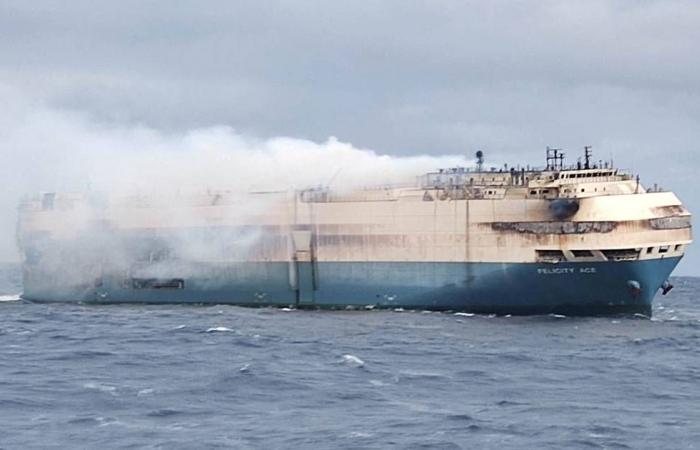After the disaster of the Felicity Ace, which sank after a suspected electric car caught fire, there has been a debate about whether e-cars are safe enough to take on ferries. A Norwegian shipping company has now been the first to announce a ban.
The discussion regarding an allegedly high risk of electric cars in parking garages, but also on board ships, has been going on for some time. However, the situation became even more explosive after the freighter Felicity Ace caught fire last year, carrying hundreds of expensive Bentleys, Lamborghinis and a number of electric cars. The latter were suspected of causing the fire.
Ironically, shipping company Havila Kystruten from the electric pioneer country of Norway – in 2020 almost 80 percent of newly registered cars there had an electric drive – now bans electric cars, hybrids and hydrogen vehicles on their ferries. The ferries operate along the coast from Kirkenes to Bergen on the so-called ‘mail boat route’, which is popular with tourists.
‘Extinguishing on board too complex’
According to Norwegian media, the shipping company has announced that a possible fire on board would lead to a very complex rescue operation that the ship’s crew would not be able to handle. The reason for the ban was probably the sinking of the car freighter Felicity Ace.
While electric vehicles are not a greater fire hazard than combustion engine cars, these types of fires are different and more difficult to extinguish. In particular, a considerably larger quantity of fire extinguishing water is required for this. While a burning petrol or diesel vehicle can be extinguished with 1600 to 2000 liters of water, a fire in an e-car often requires as much as 11,000 litres, mainly to cool down the burning battery.
In extreme cases, the burning electric car is sunk up to the top edge in fire extinguishing water, for example in a container. An effort that is hardly possible on board a ship. For the time being, only shipping company Havila has spoken out in favor of a ban on electric cars on board. It is not yet known whether other ferry companies will follow suit.
TT-Line does exactly the opposite
Remarkably enough, shipping company TT-Line, which operates between Sweden, Lithuania, Poland and Germany, follows exactly the opposite route. The company installs charging stations for electric vehicles on board their ships. These so-called ‘Green Ships’ are equipped with 32 charging stations that charge the car batteries with 40 kW direct current or 11 kW alternating current while sailing.
Unfortunately, we cannot show this social post, live blog or otherwise because it contains one or more social media elements. Accept the social media cookies to still show this content.
Free unlimited access to Showbytes? Which can!
Log in or create an account and don’t miss a thing of the stars.
Yes, I want free unlimited access
Tags: Travel ban shipping disaster hybrids electric cars ferries Car






